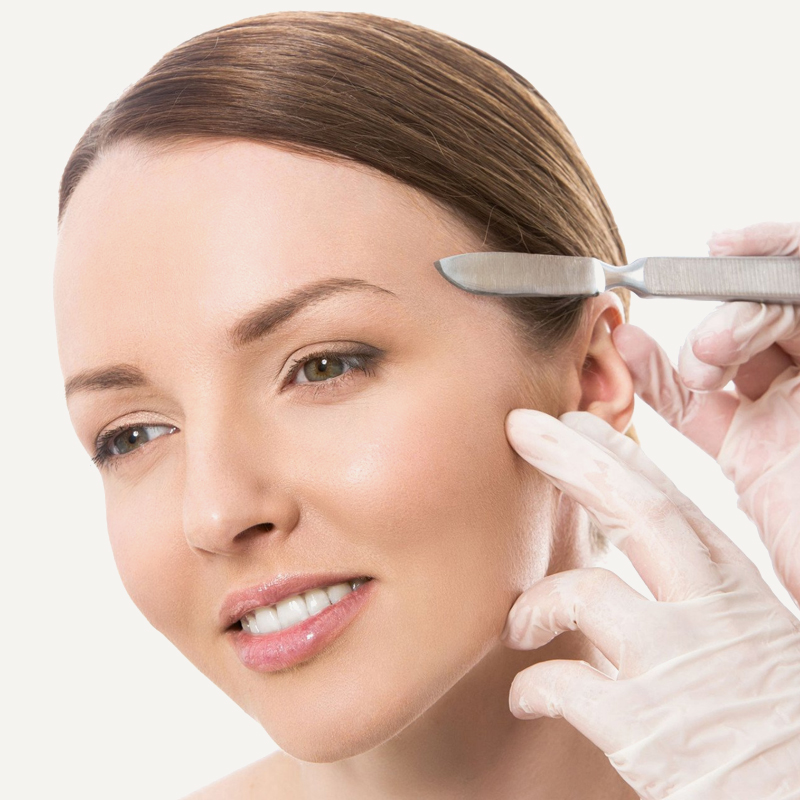
Brighten, Tighten & Lighten
What is Dermaplaning?
Dermaplaning, sometimes known as epidermal leveling or blading, is a non-invasive skin rejuvenation treatment designed to make skin feel smoother, and to appear healthier and more youthful.
Like Microdermabrasion, Dermaplaning removes the top-most layer of facial skin, thus eliminating dead skin cells and minor surface imperfections.
Dermaplaning utilizes a sterile surgical blade called a dermatome. The dermatome is carefully stroked over the skin in even motions similar to shaving. Paired with our Lactid Acid Peel for a more refined, smooth, “glowing appearance.”
What Does Dermaplaning Treat?
Dermaplaning is recommended to treat dry, rough skin, acne scars, uneven skin tone, large pores, fine line, even unwanted facial hair.
Dermaplaning is a safe, effective treatment for overall skin rejuvenation. It can produce a smoother skin texture and a clearer complexion, while minimizing fine lines and minor scars. Since the Dermaplaning dermatome is a sharp blade, unwanted peach fuzz or whiskers may also be eliminated during treatment. In this manner, Dermaplaning offers a rare combination of skin rejuvenation and facial hair removal benefits. Acne scars and minor wrinkles can be minimized with Dermaplaning as the dermatome blade removes damaged epidermal skin.
Since Dermaplaning removes dead skin more swiftly and cleanly than the natural shedding process allows, it can also trigger speedier skin cell turnover.
Dermaplaning vs. Microdermabrasion
Microdermabrasion has long been one of the top non-surgical treatments for facial skin rejuvenation. And while Dermaplaning and Microdermabrasion address most of the same skin issues, the treatment mechanism and the effects can be slightly different. Rather than the Dermaplaning surgical blade, Microdermabrasion exfoliates the surface skin with a pressurized stream of abrasive crystals.
Because Dermaplaning uses the sharp dermatome, it is often considered a more aggressive form of exfoliation than Microdermabrasion—prominent acne scars and wrinkles may be better treated with Dermaplaning.
Microdermabrasion treatments can use different exfoliating crystals for more customized treatment results. Since there’s a lesser chance that Microdermabrasion will break the skin, it can also be argued that Microdermabrasion is the safer, lower-risk treatment of the two.
